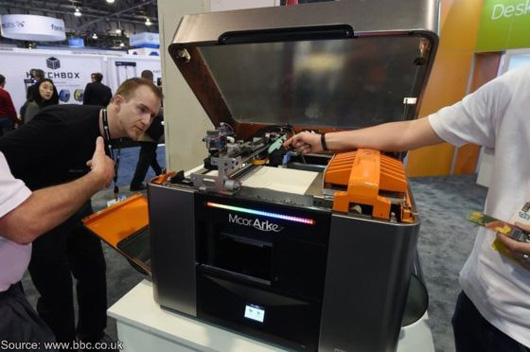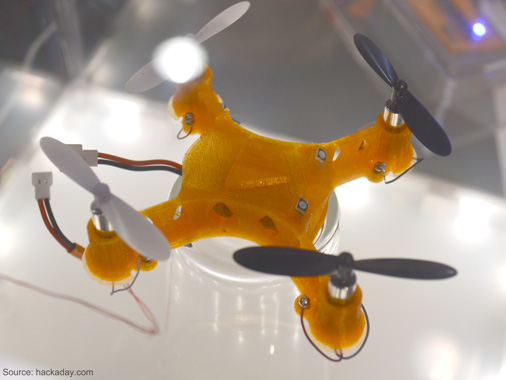CES 2016 – The Future of Gaming & Printing
The one type of tech that everyone expected to find at the CES 2016 was Virtual Reality (VR). It has been a hot topic for the last few years but the virtual reality headphones and glasses have been plagued with problems and a significant number of users becoming nauseous. Couple this with the fact that people look less than “cool” when wearing the kit and you can see why Virtual Reality has not taken off as much as expected. There is still no prime supplier or group of suppliers for VR systems so manufactures are struggling to gain both acceptance and market share. The current, big names are Oculus Rift, HTC Valve and Sony’s PlayStation VR Morpheus, the Samsung Gear VR and Microsoft’s Hololens. All had a major presence within the CES 2016 show.

Also at the show had aiming for the entertainment arena rather than purely for games were the iWear Video Headphones from Vuzix and Avegant and the Glyph headset. Homido had a strange but memorable “headset” that was a small cardboard set similar to the Google Glasses that could be used and then folded up put in to a pocket.
There was also a few kickstarter based VR companies seeking to take on the big boys and break into the market place. In all there were over 40 exhibitors of virtual reality kit enabling the user to immerse themselves in gaming and/or their choice of films or destinations.
The other major tech trend that was well represented at the CES 2016 was 3D printers. The most written about object printed by a 3D printer was a realistic, life size Star Wars Storm Trooper. Fully armoured in the signature glossy white skin, it even had its own gun and helmet. The Storm Trooper was printed on 3D Systems’ printer by Anovos Productions, who expect to use similar products in future block buster films.

Looking at 3D printing – a market place that is rapidly maturing as uses for 3D printers are found – one printer that is attracting a lot of attention is the Mcor Arke. It is different in that the starting material is a block of cardboard that the printer uses a set of razors to cut out the required model. Inkjets are then used to add colour and then lastly glue joins together all the parts and layers of paper. This printer is so good that it works at a level of 4,800 x 2,400 dots per inch that is better than many ordinary 2D printers. It is anticipated that this printer will be very useful in designing model such as that found in product designing for cars as well as the obvious film set.
Most other 3D printers use a variation of plastic extrusion and/or powder manipulation that is both messier and more expensive than the paper based model, although not so constraining in their potential usage. Also being different is the 3D Systems direct metal printer that can make models out of stainless steel or titanium.
At the other end of the market and mindful of the costs of 3D printing, some companies such as Taiwan’s XYZprinting company are attempting to offer printers with a price point as low as £198. Their Da Vinci Mini uses extruded plastic to build up a 3D output. The results are not too impressive as the printer is sold as a starter printer. As to its uses this is a moot point. One could perceive that a purchaser would soon bin this model with a view to purchasing a more expensive model that at least has a useable output. XYZprinting is one of the major 3D printing players so it must know its market well and may be constructing new markets for itself.
Other 3D printers being exhibited have already worked out their market place and are targeting their software and potential outputs to specific industries. The CES website proudly declares that “Most 3D printers are used for building prototypes for medical, aerospace, engineering and automotive industries”.

Some companies such as Voxel8 have ignored this description, preferring to announce that they make functional models for many different industries using multiple materials. They aim at companies as diverse as the medical industries to defence industries. This year they bought fun into their equation – displaying: a Wireless Power disk, a Quadcopter, and an Embedded Watch bringing technology and electronics together in one package. As well as causing quite a stir and a not insignificant amount of press coverage.
On the subject of smashing together two differing technologies, 3DPrinter OS announced a 3D printing cloud platform to network together remote 3D printers backed up with some pretty sophisticated monitoring and management software.
Polaroid, the instant camera company that is reinventing itself is finding its niche within 3D printing and announced its model ModelSmart 250S, produced in collaboration with the inkjet cartridge maker Environmental Business Products. This model’s USP is that it contains a wi-fi enabled camera that enables remote monitoring of what can be a lengthy printing process.
Looking at both maturing markets – Virtual Reality and 3D printing; it seems that CES 2016 is bring out more models and more options to be enjoyed throughout the rest of the year, many of them being trend setters.
